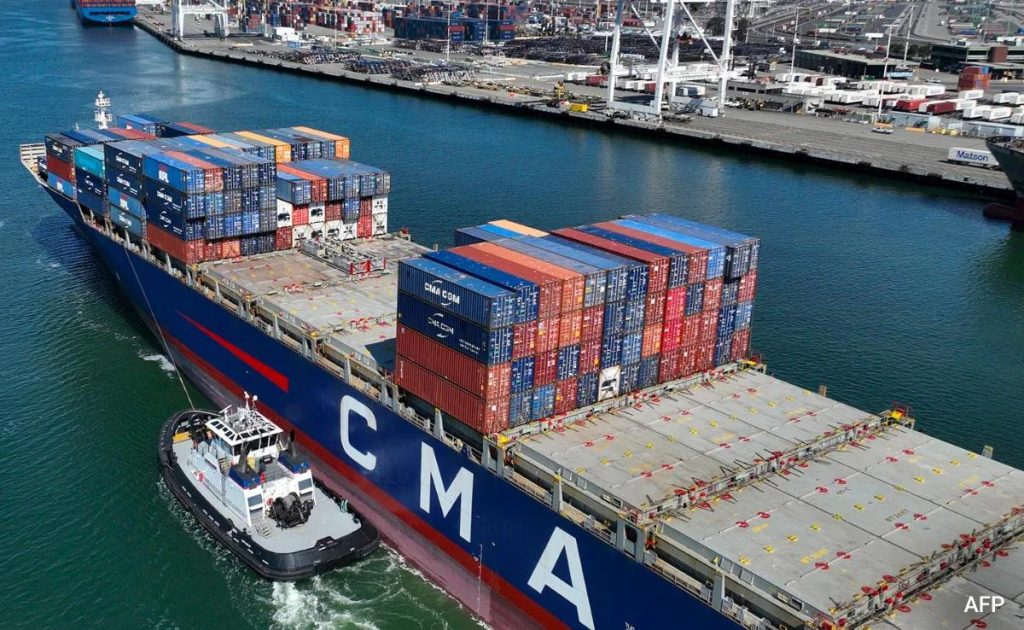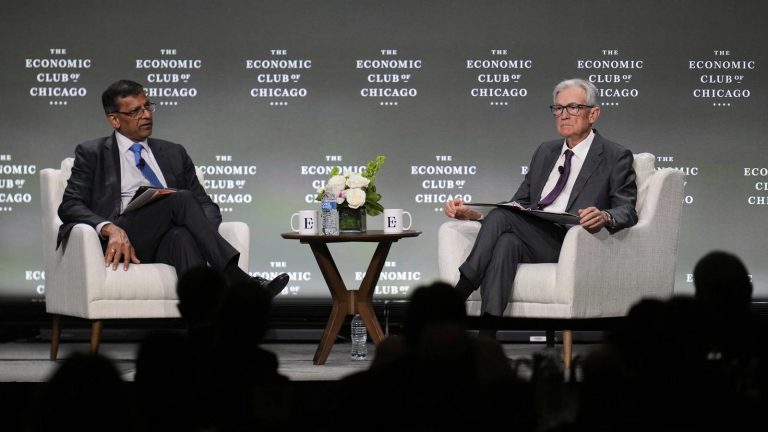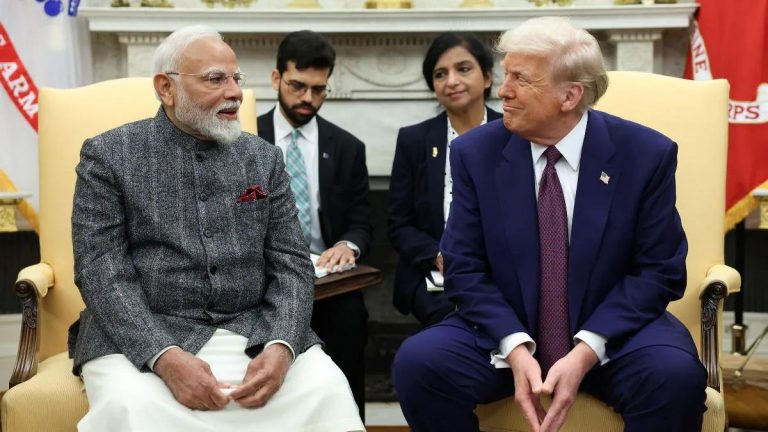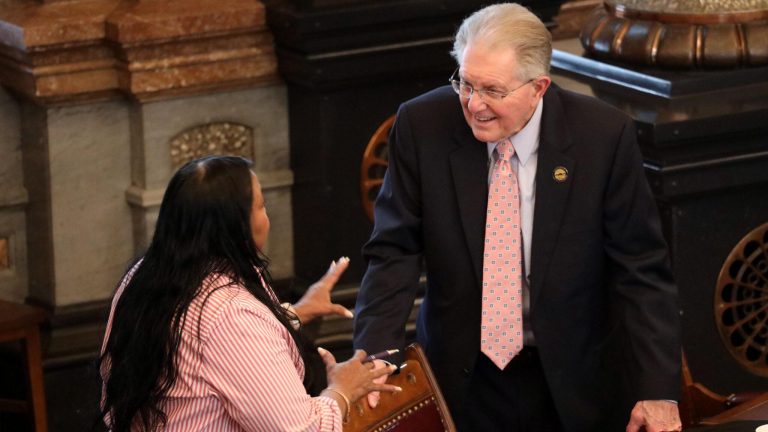
Rare Earth Showdown: US Dreams vs. China's Grip | Image Source: www.ndtv.com
WASHINGTON, D.C., April 13, 2025 – At a dramatic turning point in the restructuring of world trade and strategic policy, China has intensified its control over exports of rare earths and specialized magnets, essential components for military, aerospace and high-tech industries. The restrictions, formalized earlier this month, left ports all over China that stop exits while the government is developing a new regulatory framework that could fundamentally redefine who has access to these critical resources – and that does not.
According to the New York Times, restrictions come at the heels of President Trump’s strong march in tariffs against Chinese goods, as part of a broader escalation in the long US trade war. China, which controls about 90 per cent of the world’s production of rare earth elements (RTEs), quickly benefited from this area, targeting not only raw mineral exports, but also refined products such as permanent magnets, items with few other sources and a high importance in the manufacturing sectors of electric vehicles for missile guidance systems.
Why are rare earths so critical?
Rare earths – including elements such as dysprosio, terbium and neodymium – may seem dark, but are fundamental to modern technology. These elements improve magnets in electric motors, increase the performance of reaction lasers and motors, and even help control critical chip components on artificial intelligence servers and smartphones. According to Reuters, many specific REEs currently under export control are used in high performance magnets that allow the functionality of everything, from Teslas and drones to F-35 combat jets.
Q: What makes the Chinese movement so important to the global market? A: Because China is not only the largest mine of these materials, it also dominates the supply processing and refining chains. Even when ERAs are operated elsewhere, in countries such as the United States, Australia or Greenland, they often end up in China to process before returning to Western industries in a complete manner. This makes Beijing’s new licensing regime a powerful weapon.
The Beijing movement highlights what many policy makers and analysts have long feared: the vulnerability of Western economies to supply chains, particularly in the field of advanced materials. The United States has only one active REE mine – Mountain Pass in California – and even this operation is largely dependent on Chinese alliances. Shenghe Resources, a Chinese state-owned company, owns about 8% of this mine, which gives Beijing an indirect position in the extraction of US resources.
Trump Greenland game: resource catch or policy Mirage?
Greenland, an exposed ice that has long been ignored, is at the heart of the recent struggle for scarce alternative land sources, but now focused on geopolitical relevance. President Trump’s controversial speech to acquire Greenland, made public in March during a Congressional speech, was launched as a bold strategy to ensure access to unexploded mineral stocks. ”We’re going to make you rich,” Trump said in Greenland, “and together we’re going to bring Greenland to heights like you never thought possible. »
But under the rhetoric of holding headlines, the answer was at best lukewarm. According to a survey conducted in January 2025, only 6% of the Inuit population in Greenland supports the idea of becoming American. This number is unlikely to increase after Trump refused to exclude the use of force to take control of the territory. This caused indignation in the capital of Greenland, Nuuk, and anxiety among the Copenhagen allies. “This conclusion can only be drawn by an entire catastrophe,” said Danish political scientist Ole Wæver on Trump’s justification for national security. “None of these issues really concern Greenland.”
Is Greenland the answer to the Chinese Chokehold?
Q: Does Greenland really offer a viable alternative to China for rare minerals? A: Not exactly – and certainly not in the short term. According to Minik Rosing, a geologist and professor from Greenland at the University of Copenhagen, the assumptions that support Trump’s vision are wrong. “It’s a mirage,” said Rosing 60 minutes. ”It was described as this very easy access to a very fast wealth. And that’s not the case.”
Although the U.S. Geological Survey has identified a wide range of minerals in Greenland, including 43 out of 50 used by the U.S. industry, Rosing points out that the presence of minerals does not automatically make extraction possible or profitable. “There is a difference between having minerals on the ground and being able to exploit them economically,” he said. “You still need markets, infrastructure and, most importantly, the ability to process what you get
Greenland ranks eighth in the world in the known REE reserves, according to a 2024 report by the United States Geological Survey. It trains not only in China, but also in countries like Vietnam and Brazil. Most importantly, there is a lack of refining infrastructure to convert raw ore into usable material, a supply chain still largely dominated by Chinese companies.
Mining dreams face difficult realities
Even where mining started in Greenland, the way forward is far from simple. 60 minutes visited the Amaroq Minerals gold mine in southwestern Greenland, which was recently reopened under the direction of CEO Eldur Olafsson. Supported by an investment of approximately $250 million, the mine has produced only one gold bar so far. However, Olafsson remains confident, and expects annual revenues of up to $150 million once operations increase. “This is not a short-term game,” says Olafsson. “Our investors must be long-term investors. They need to believe in us.”
This feeling – belief in the long game – encapsulates much of the current debate. While Rosing supports gold mining, which offers immediate demand for the market and clear profit margins, he remains sceptical about the broader efforts for rare earths. A gold mine. No problem selling gold, “he said. But for other minerals,” you can’t have the ore and think it will give you the metals the next day. “
Q: What does breaking the Chinese monopoly mean? A: A combination of economic, technological and political barriers. Western countries must invest not only in mining, but also in refining, processing and manufacturing infrastructure. This would require massive subsidies and political will, both sporadic at best in the United States and Europe. “How many new mines have been opened in the United States or Europe over the last 20 years? Very little,” said Rosing.
Harmonization of the supply chain
China’s export restrictions, especially on large rare earths such as gadolinium and disprosio, are more than economic manoeuvres; They’re geopolitical weapons. By controlling not only production, but also refining and distribution, Beijing has the power to create instant shortages, increase prices and put pressure on foreign governments. The latest restrictions apply not only to the United States, but also to all global buyers, putting the world at stake.
Although the Chinese government has not issued an absolute ban, its control over the licensing process allows it to accelerate exports. Companies such as Lockheed Martin, Tesla and Apple – largely dependent on Chinese-based components - are now facing increasing uncertainty. The United States may have rare earth reserves but lack sufficient volumes to meet long-term industrial and defence needs.
And then what?
Q: Is the West ready to get rid of Chinese minerals? A: Not yet, but there is growing recognition that you need. According to several scientists interviewed for 60 minutes, the real way forward is not territorial acquisition or rapid extraction permits. Rather, it involves building sustainable national supply chains, from extraction to processing to final product assembly. “We can decide to pay a bonus for independence,” Rosing said. “But it’s a political option, not geological.”
At a time when geopolitical failure lines are being doubled, the rare land crisis has exposed the fundamental vulnerability of Western economies. Although Trump’s proposal in Greenland is headlined, it does not fill systemic gaps in treatment, infrastructure and market preparation. While China cleans the screws, the message to the West is clear: it is not enough to dig the dirt – you must possess the entire value chain.
Greenland is a treasure for the world, Rosing concludes. “But this is not a place where the money is sitting on the ground waiting to be collected. It will require planning, patience and a lot of investment.”



